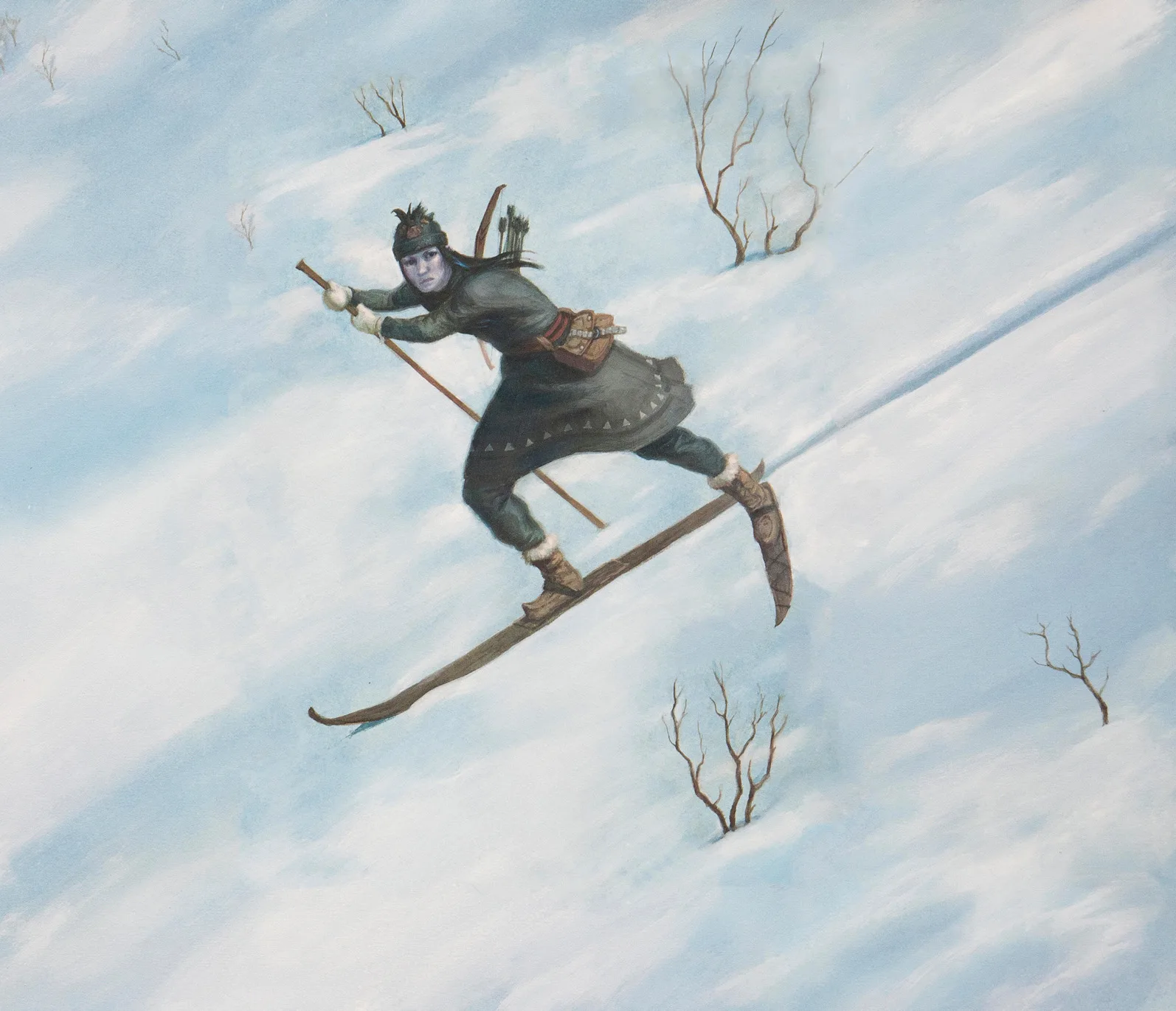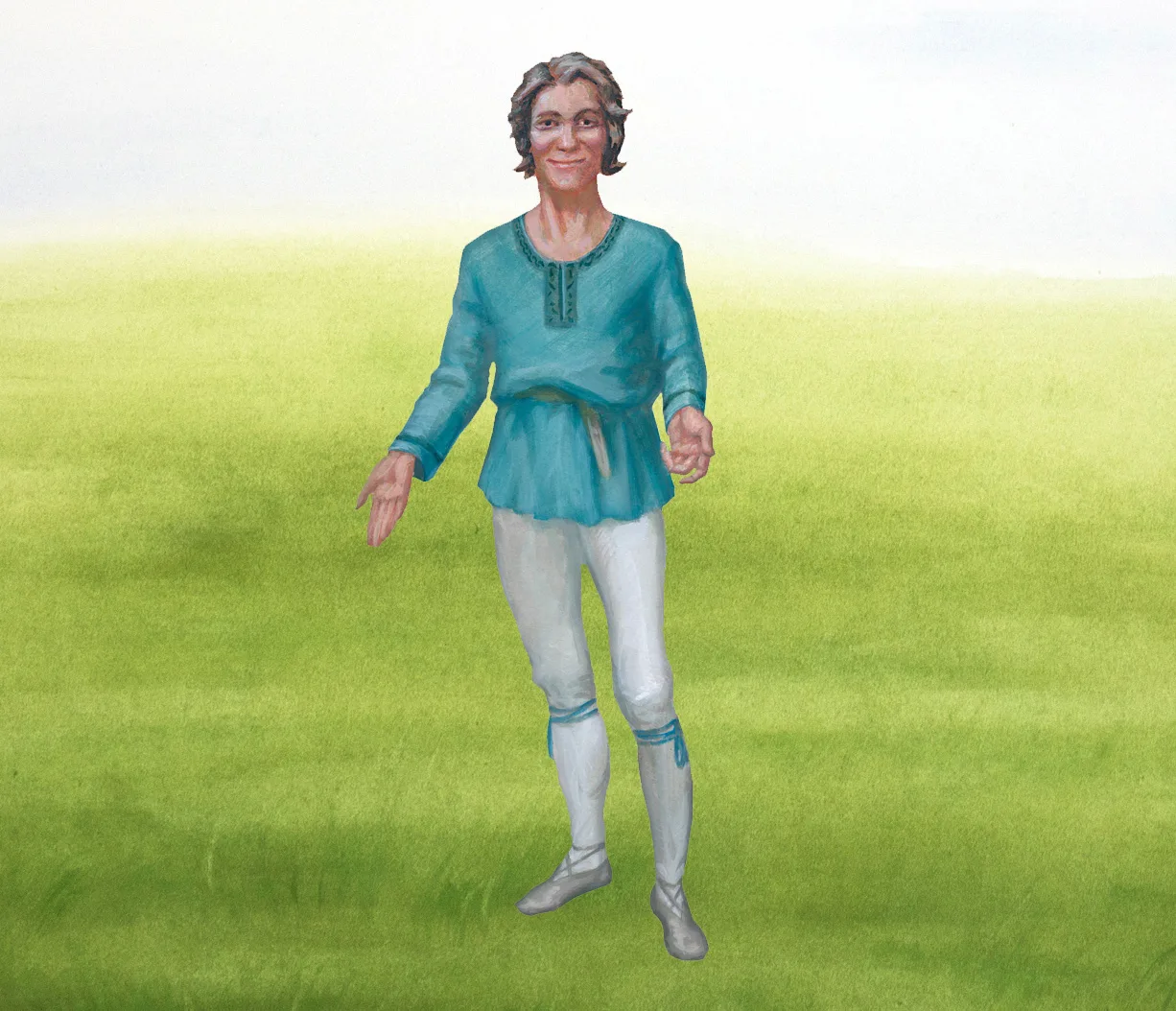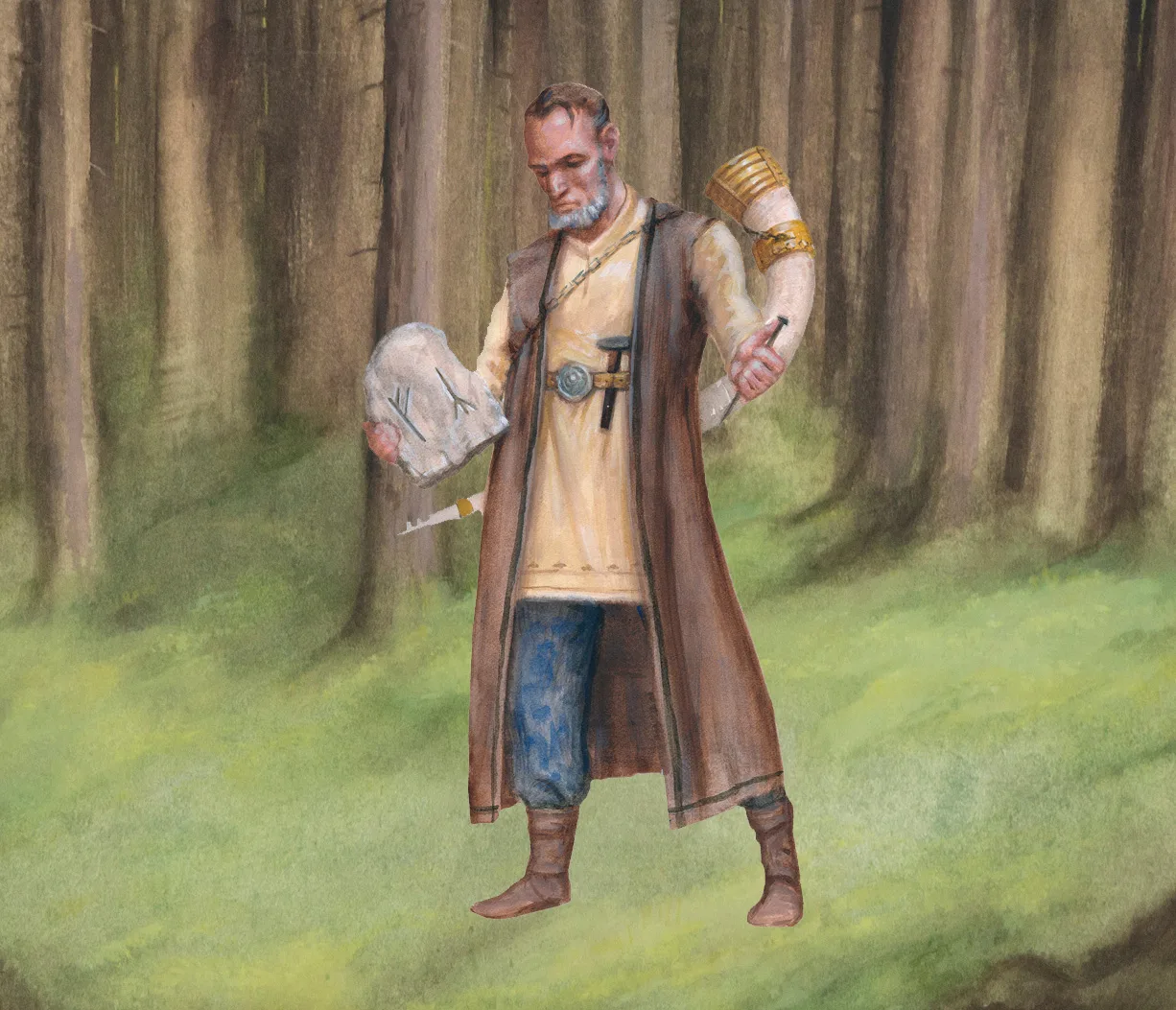Odin – leader of the gods
Iron Age
500 BC – AD 1100
Viking Age
AD 800 – AD 1100
Middle Ages
AD 1050 – AD 1520
Odin is aided by several animals. His two ravens, Huginn and Muninn (representing thought and memory) fly across the world and report back what they have seen. Sleipnir, the eight-legged horse, can gallop through all realms. Geri and Freki are Odin’s wolves.
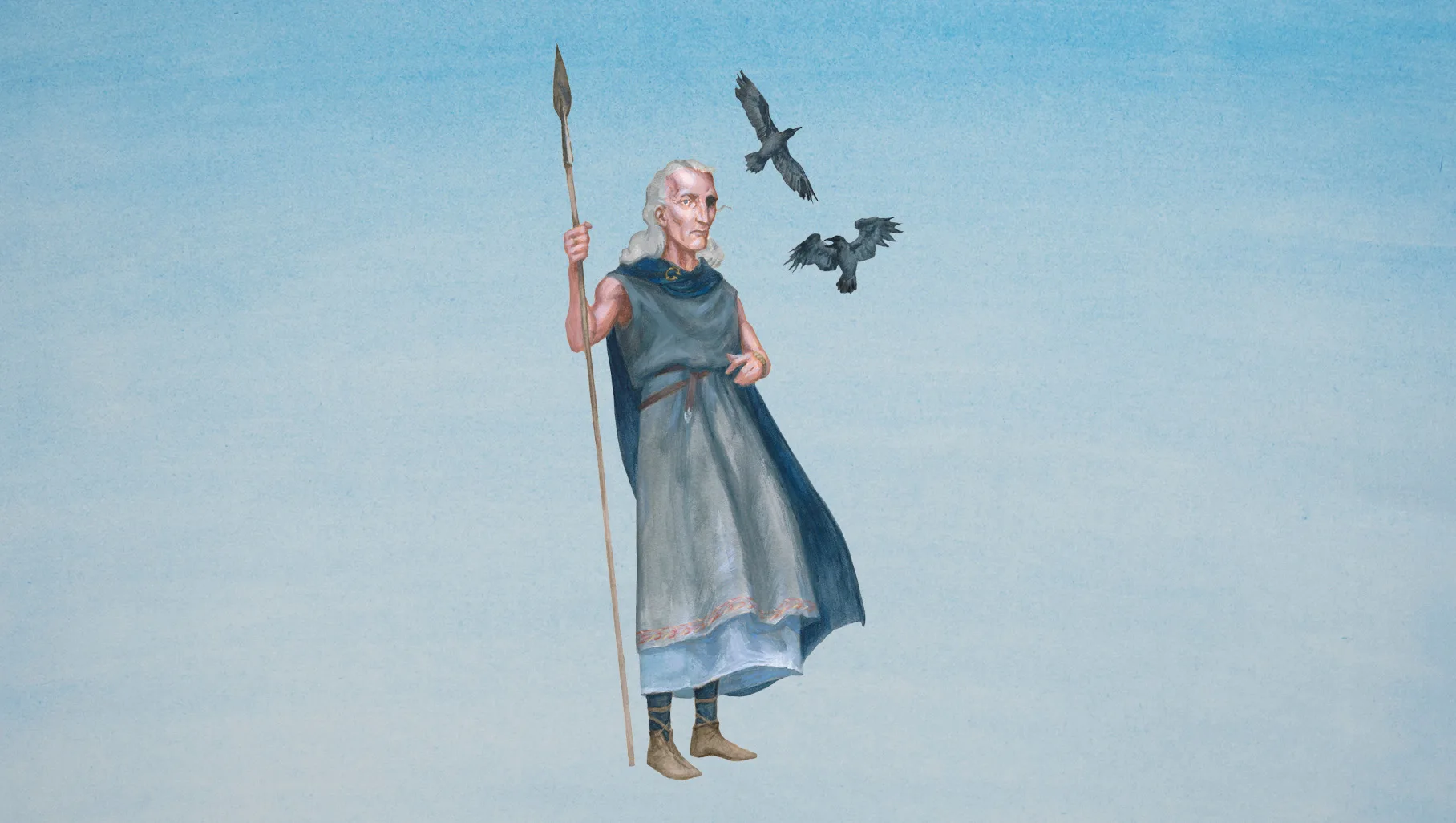
Odin could shapeshift and travel through the worlds as an animal or in other forms. He could leave his body and journey as a bird, fish, serpent or four-legged creature in search of knowledge.
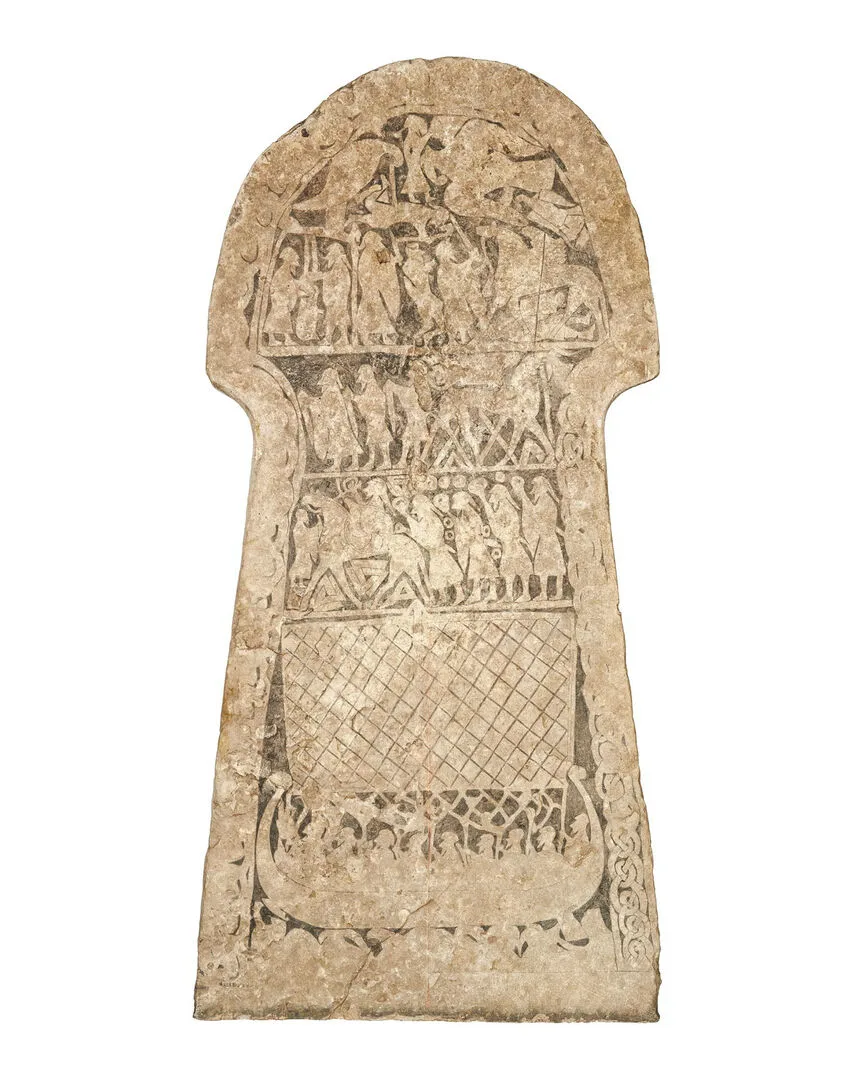
Picture stone
Picture stone from Tängelgårda, Gotland.
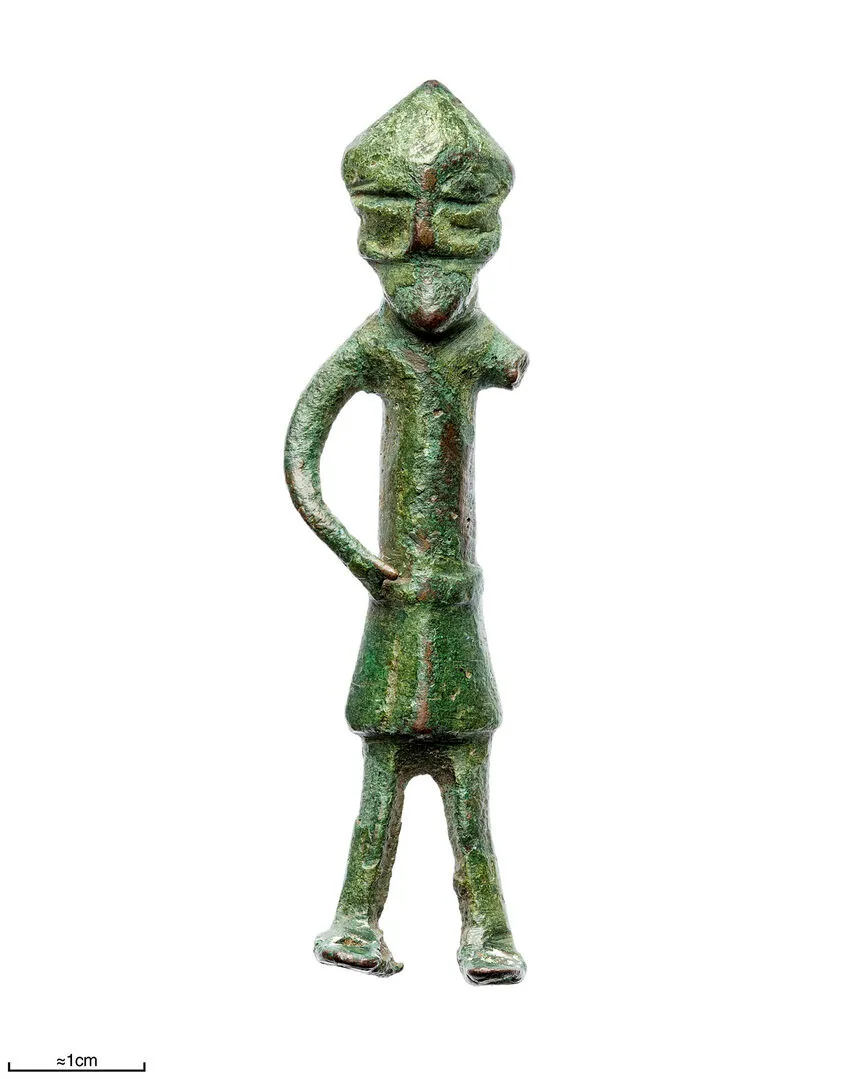
Figurine perhaps depicting Odin
Figurine of bronze found in Lindby, Skåne. The figurine is thought to depict Odin due to that one of its eyes is deformed.
On view at Historiska museet in the exhibition Guldrummet
The one-eyed god who sacrificed himself
Seated upon his high throne, Hlidskjalf, beside Frigg in Valhalla, Odin gazed out over the whole world. Yet he longed to know all things and gain wisdom and knowledge of what lay hidden. This desire drove him to sacrifice himself.
He gave his eye to Mimir’s well and cast himself upon his spear, Gungnir, in a symbolic, ritual act of self-slaughter. He then hung himself upon the world tree, Yggdrasil, for nine nights and nine days, in order to gain knowledge of other worlds and to understand the runes.
Through these acts of sacrifice, he saw visions and acquired secret wisdom. The magical knowledge he obtained enabled him to heal the sick, calm storms, turn weapons against his foes, stir women to longing and disarm dangerous sorceresses – often with no more than a single glance.
Odin’s role in Norse mythology
Odin is a complex and powerful deity, embodying both wisdom and might in Norse mythology. His sacrifices in pursuit of knowledge and his ability to move between realms reveal how vital he is to the world of the Æsir. Despite his dark and enigmatic nature, he is also a charismatic leader, ruling through both strength and sorcery.
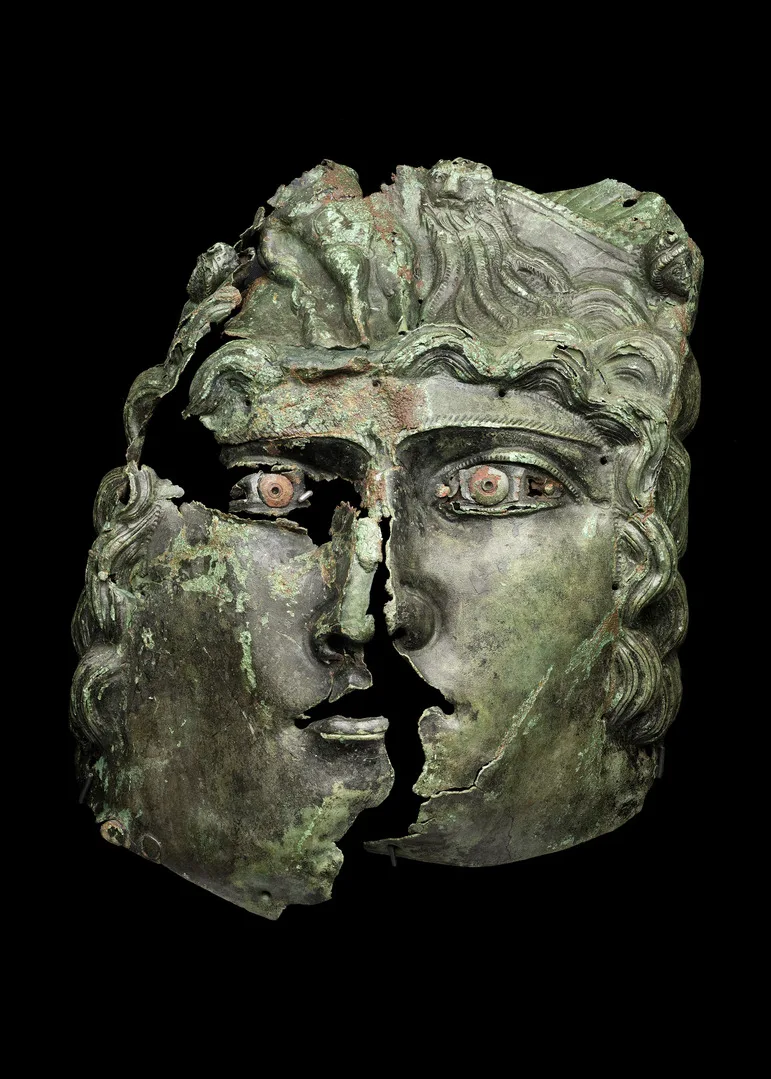
Equestrian mask
A Roman face mask of bronze found on Gotland.
Facts about Odin
- Name: Odin (also spelt Oden)
- Parents: Borr (father) and Bestla (mother)
- Siblings: Vili and Vé (brothers)
- Consort: Frigg
- Children: Baldr and Thor
- Attributes: Wise, powerful, mysterious, self-sacrificing, ruler
- Symbolism: Wisdom, war, death, poetry, magic, runes
- Resides: Valhalla in Asgard




